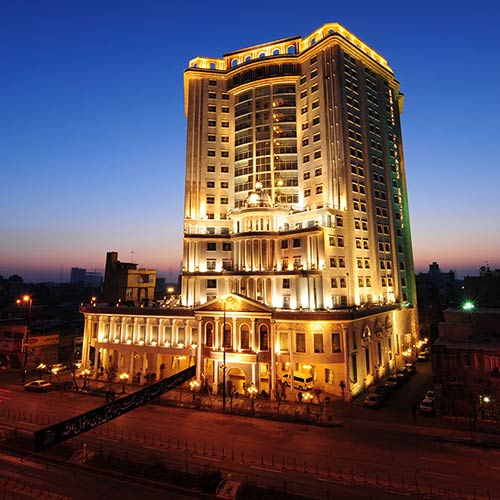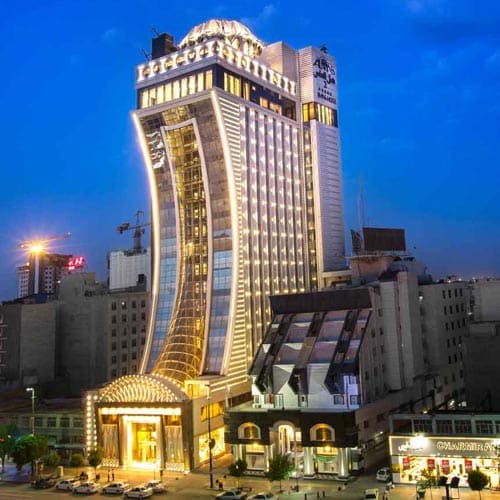Nishapur Turquoise: Prices, Types, and Where to Buy
Where to Buy Nishapur Turquoise in Mashhad

Nishapur turquoise, Iran’s sky-blue gem, is more than a stunning stone—it’s a piece of Mashhad’s cultural soul. Mined from the ancient hills of Nishapur, near Mashhad, this vibrant turquoise captivates with its Persian Blue hue, making it a must-have souvenir for visitors.
Whether you’re a pilgrim at the Imam Reza Shrine or a traveler exploring local markets, buying authentic Nishapur turquoise can be a highlight of your trip. From spotting fakes to finding the best shops, this guide covers everything you need to know about turquoise shopping in Mashhad. Ready to bring home a timeless treasure? Let’s dive into the world of this iconic gem.

Contents
What Is Nishapur Turquoise? Iran’s Historic Gem
Nishapur turquoise is a prized gemstone formed from hydrated aluminum phosphate with traces of copper, giving it a signature blue-to-green palette. Mined for over 5,000 years near Nishapur, 170 km west of Mashhad, it’s one of the world’s finest turquoises.
Its purest form, called Ajami, boasts a flawless sky-blue shade, while Shajari features intricate vein-like patterns. “It’s like holding a piece of Iran’s sky,” says a local jeweler quoted on OrientTrips. Beyond jewelry, it’s adorned ancient palaces and mosques, as noted in Encyclopaedia Iranica. Curious about Mashhad’s cultural riches? Explore Mashhad: Iran’s Holiest City and Imam Reza Shrine.

A Cultural Icon
In Persian tradition, turquoise symbolizes luck, protection, and serenity. Kings wore it in rings, and artisans wove it into intricate designs, from book covers to mosque domes like Isfahan’s Sheikh Lotfollah—learn more in Discover Iran Architectural Wonders: Mosques, Palaces, and Gardens. For pilgrims, buying turquoise in Mashhad feels like carrying home a slice of Iran’s heritage. See Top Souvenirs from Mashhad: Must-Buy Gifts for other keepsakes.

Why Nishapur Turquoise Stands Out
What makes Nishapur turquoise so beloved? Its unrivaled color, rarity, and deep cultural roots set it apart. The vivid Persian Blue—a term coined globally for its hue—comes from unique geological conditions in Nishapur’s mines, unmatched elsewhere.
Unlike Arizona or Tibetan turquoise, Nishapur’s stones blend intensity with subtlety. Travelers flock to Mashhad’s markets for this gem, drawn by its beauty and spiritual significance. For broader shopping tips, check The Ultimate Guide for Shopping in Iran: Souvenirs and Markets.

Spiritual and Symbolic Value
Believed to ward off evil and bring prosperity, turquoise holds a special place in Iranian and Islamic traditions. Hadiths praise its use in rings for answered prayers, making it a favorite among shrine visitors. “It’s more than jewelry—it’s a blessing,” shares a pilgrim on Reddit. Dive deeper into local beliefs with Vibrant Culture of Iran: Unveiling Traditions and Etiquette.
Top Hotels in Mashhad for Your Stay
Discover the best hotels in Mashhad with great prices and premium services—close to the shrine and top attractions. Perfect for families and travelers seeking comfort and convenience.
The Nishapur Mines: Birthplace of a Gem
Tucked 55 km northwest of Nishapur, the ancient mines produce the world’s purest turquoise. Volcanic rocks and millennia-long geological processes create stones of unmatched clarity. Miners still use traditional methods, chiseling raw turquoise from rugged cliffs—a process unchanged for centuries.
After extraction, artisans in Mashhad and Nishapur shape these rough gems into polished treasures. Visiting the region? Explore nearby wonders in Neyshabour: A Must-Visit Gem in Iran’s Khorasan.

Crafting the Gem
Skilled cutters transform raw stones into rings, beads, or intricate inlays, preserving their natural beauty. A fine cut enhances value, while poor craftsmanship dims the stone’s allure. “It takes years to master turquoise cutting,” says a Mashhad artisan. For a broader look at Persian crafts, see Iranian Handicrafts: Exploring Traditional Arts and Crafts.
Where to Buy Nishapur Turquoise in Mashhad
Mashhad’s markets pulse with turquoise vendors, but quality varies. To score authentic Nishapur turquoise, stick to trusted spots near the Imam Reza Shrine or modern malls. OrientTrips guides you to the best locations while securing cozy stays nearby—perfect for souvenir hunting. Here’s where to shop.

Reza Bazaar: The Souvenir Hub
Just steps from the shrine, Reza Bazaar is Mashhad’s go-to for turquoise. Its second floor brims with shops offering rings, necklaces, and raw stones. From affordable Shajari beads to rare Ajami gems, you’ll find it all.
Bargaining is expected—start at 20% below the asking price. “I found a stunning ring after a bit of haggling,” shares a TripAdvisor user. For more bazaar tips, visit Tehran Grand Bazaar: A Shopping Experience Like No Other for similar vibes.

Shrine-Side Specialty Shops
Streets like Shirazi and Nawab Safavi, flanking the shrine, host jewelers with deep expertise. Some even have on-site workshops, letting you watch stones being cut. These shops often carry premium pieces and offer certificates for high-value items. Prices may be higher, but authenticity is near-guaranteed. Pair your shopping with a stay nearby—check Top Hotels Near Imam Reza Shrine in Mashhad.
Modern Malls
For a sleeker experience, malls like Almas Sharq, Arman, or Proma sell turquoise in upscale settings. Selection is smaller than in bazaars, and prices reflect mall overheads, but the vibe suits those craving comfort. “It’s less hectic than the market,” notes a Google reviewer. For modern shopping insights, see 5 Best Shopping Malls in Tehran for parallels.

How to Spot Authentic Nishapur Turquoise
Fake turquoise floods some markets, but you can outsmart scammers. Authentic Nishapur turquoise has distinct traits—knowing them saves you from overpriced imitations. Always buy from reputable sellers and request a certificate for costly pieces.
Check Color, Luster, and Hardness
Real turquoise glows with a natural blue, from vivid Ajami to veined Shajari. Fakes, often dyed howlite or plastic, look unnaturally bright or glossy. Authentic stones have a waxy, matte sheen, not a glassy shine. Test hardness gently (with seller permission)—turquoise (5-6 on Mohs scale) resists scratches from a needle, unlike softer fakes. For general shopping smarts, see What to Buy in Tehran: The Best Souvenirs for Every Budget.
Watch for Treatments and Lookalikes
Some low-grade turquoise is stabilized with resin, boosting color but lowering value. Sellers should disclose this. Dyed stones like magnesite mimic turquoise but have uniform veins, unlike the organic patterns of Shajari. Lab-made synthetics are trickier—only gemologists with tools can confirm. Stick to trusted vendors listed on OrientTrips to minimize risks.

Beyond Rings: Turquoise’s Many Forms
While Nishapur turquoise shines in men’s rings, its versatility spans far wider. From delicate jewelry to intricate crafts, this gem dazzles in countless creations, perfect for gifting or cherishing.
Jewelry Galore
Necklaces, bracelets, and earrings pair turquoise with silver or gold for timeless elegance. Beaded turquoise tasbihs (prayer beads) blend spirituality and style, beloved by pilgrims—see Top Souvenirs from Mashhad. “My turquoise pendant feels so personal,” says a visitor on Instagram. For more jewelry insights, check Exploring Iranian Jewelry: Ancient to Modern Designs.

Firoozeh-Koobi Art
In the art of Firoozeh-Koobi, tiny turquoise pieces are set into copper vases, trays, or mirrors, creating shimmering mosaics. Mashhad and Isfahan excel in this craft, producing heirloom-worthy decor. “It’s like owning a piece of Persian history,” raves a collector. Learn about similar crafts in Yazd’s Traditional Crafts: Masterpieces of Handicraft.

Stay Smart with OrientTrips
Shopping for turquoise is richer when your stay is sorted. OrientTrips offers hotels near Reza Bazaar and the shrine, letting you focus on finding that perfect gem. Choose budget-friendly or luxe options to suit your vibe—see Best Budget Hotels in Mashhad or Best 5-Star Hotels in Mashhad.
FAQs About Nishapur Turquoise
Is Nishapur turquoise expensive?
Prices vary widely. Small Shajari beads start affordably, while large Ajami stones can cost thousands. Color, size, and cut drive value—budget options exist for all.
How do I know it’s real Nishapur turquoise?
Buy from trusted shops in Reza Bazaar or shrine-side stores. Check for natural color and waxy luster. For pricey pieces, demand a gemology certificate.
What’s the difference between Ajami and Shajari?
Ajami is pure blue, rare, and pricier. Shajari has earthy veins, valued for its unique patterns. Both are stunning—choose based on taste.
Can turquoise change color over time?
Yes, exposure to oils, chemicals, or sunlight can fade or green the stone. Store it carefully—away from lotions or heat—to preserve its hue.
Where’s the best place to buy in Mashhad?
Reza Bazaar’s second floor is the hotspot, with endless variety. Shirazi and Nawab Safavi streets offer specialty shops for premium picks.
Final Thoughts
Buying Nishapur turquoise in Mashhad is a journey into Iran’s heart, blending beauty, history, and spirituality. From the vibrant stalls of Reza Bazaar to the skilled hands crafting Firoozeh-Koobi, every piece tells a story. With OrientTrips guiding your stay and shopping, you’ll leave with a gem that’s more than a souvenir—it’s a connection to Persia’s past. Got a turquoise tale or tip? Share it below to inspire other travelers.










